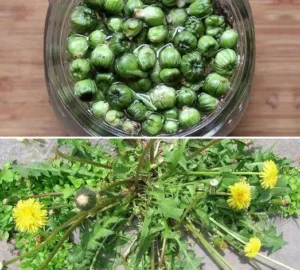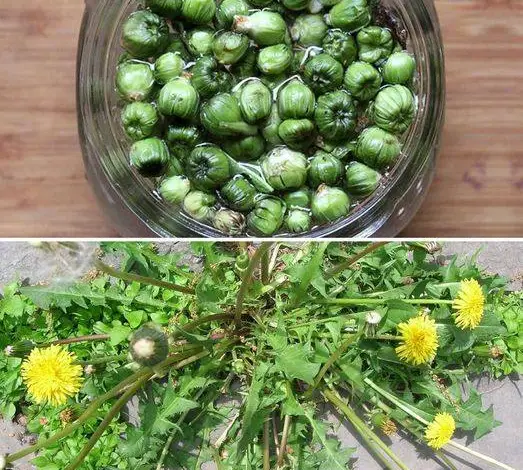Dandelion “capers” are a delightful and healthy alternative to traditional capers, offering a unique way to utilize the entire dandelion plant. These edible buds, when harvested young and marinated, can add a tangy and slightly bitter flavor to various dishes, mirroring the classic caper’s culinary versatility. Here’s how you can prepare your own dandelion “capers” at home.
Ingredients:
150 grams of young dandelion buds
150 ml of vinegar
80 ml of water
1 tablespoon of salt
Harvesting:
Find Dandelion Buds: Look for very small dandelion buds close to the ground, not the unopened flowers at the top of the plant. These buds are usually found around the base and are the ones you’ll want to harvest for making “capers.”
Gather Carefully: Remember, dandelions can produce several flowers throughout the season. Harvesting these secondary buds won’t harm the plant’s ability to flower again.
Preparation:
Clean the Buds: Rinse the dandelion buds thoroughly under cold water to remove any dirt or insects. Pat them dry gently with a clean towel.
Boil the Brine: In a saucepan, combine the vinegar, water, and salt. Bring the mixture to a boil, stirring until the salt dissolves completely.

Jar the Buds: Place the cleaned dandelion buds into sterilized glass jars.
Marinate: Pour the hot brine over the dandelion buds in the jars, ensuring they are completely covered
Storage:
Refrigerate: Seal the jars tightly and store them in the refrigerator. Your dandelion “capers” will be ready to use after marinating for a few days and can be kept in the fridge for several months.
Water Bath Processing (Optional): For longer shelf life outside the refrigerator, you can process the sealed jars in a water bath for 10 minutes. Ensure the jars are covered by at least an inch of water. After processing, let the jars cool and store them in a cool, dark place.
Usage:
Dandelion “capers” can be used just like traditional capers. They’re excellent in salads, pasta dishes, or as a garnish for fish. Their unique flavor can add depth to many recipes, offering a tangy and slightly earthy note.
By making dandelion “capers,” you not only create a tasty condiment but also embrace the full potential of a plant that’s often overlooked. This sustainable and flavorful project is a great way to explore the versatility of edible wild plants and add a homemade touch to your culinary creations.
